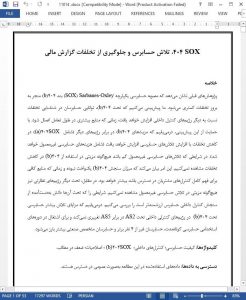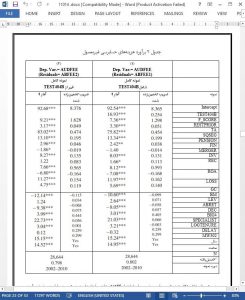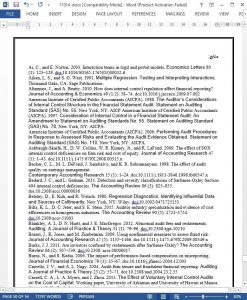SUMMARY
Prior research shows that the Sarbanes-Oxley Act (SOX) Section 404(b) integrated audit is associated with a lower incidence of misstatements. We predict that under 404(b), the auditor’s ability to detect misstatements increases relative to other internal control regimes when greater resources are exerted during the engagement. Supporting this prediction, we find that the benefits of 404(b) versus other regimes (including SOX 404(a)) in reducing misstatements increase with incremental audit effort (proxied by abnormal audit fees). We find no benefit of 404(b) in misstatement reduction when abnormal audit effort is low. This implies that the value of 404(b) testing is not uniform, but rather is greater when sufficient resources are available to thoroughly understand client controls. In contrast, we find no benefit of abnormal audit effort under other regulatory regimes. We further examine the conditions under which knowledge gained from auditor internal control testing is more valuable. We find that the benefits of increased audit effort under 404(b) do not vary across internal control regimes under AS2 versus AS5, and are more pronounced for engagements with shorter auditor tenure, non-Big 4 auditors, and industry-specialist auditors.
INTRODUCTION
We examine whether the effectiveness of Section 404(b) of the Sarbanes-Oxley Act (SOX, U.S. House of Representatives 2002) in reducing financial misstatements varies with auditor effort, and the circumstances under which greater audit effort enhances the benefits of 404(b) in misstatement prevention/detection. SOX contains many provisions intended to help restore investor confidence in corporate financial reporting. Among these is SOX 404, designed to improve the quality of financial reports by requiring evaluation by management (SOX 404(a)) and auditors (SOX 404(b)) of internal controls over financial reporting, as well as disclosure of control weaknesses that might allow material misstatements in the financial reports. As one of the most costly and controversial provisions of SOX, Section 404(b) had been the focus of a number of studies assessing its effectiveness.1 Particularly relevant to our investigation, Nagy (2010) finds lower misstatement likelihood for firms under SOX 404(b) in the year following implementation. While that study finds a marketwide effect, it is not clear whether control testing under 404(b) uniformly benefits all firms. This issue has important implications for investors in assessing reliability of financial reports, as well as for regulators in measuring benefits relative to costs of this key regulation.
CONCLUSIONS
More than ten years after the passage of SOX, it remains unclear whether auditor internal control testing under 404(b) leads to better financial reporting quality relative to less-costly alternative internal control regimes and, if so, under what circumstances financial reporting improvements are garnered. We propose that the financial reporting improvements arising from control testing under 404(b) should increase with auditor effort. We further suggest that the benefits of greater effort under 404(b) are not uniform, but rather are greater under conditions where auditors’ knowledge of the client’s control structure can be better acquired and used. We investigate this issue in the context of auditors’ prevention of financial reporting misstatements, as shareholders suffer significant losses from restatements (Palmrose et al. 2004; Hennes, Leone, and Miller 2008; Burks 2011). In so doing, we build on prior research by Nagy (2010), who finds that 404(b) control testing on average reduced financial misstatements in the year following implementation of this regime.











